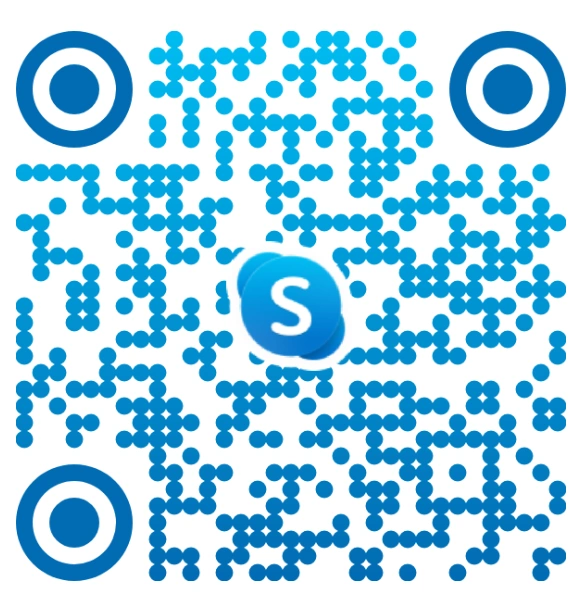Chain-of-RAG: Building Multi-Step AI Systems for Complex Business Solutions
Introduction
Imagine an AI assistant that can read a long legal contract, summarize the key clauses, and then suggest revisions based on company policy. That’s the power of Chain-of-RAG, short for Chain of Retrieval-Augmented Generation. Unlike traditional RAG-based AI systems that perform single-pass retrieval and generation, multi-step RAG systems enable more intelligent, layered tasks with greater context and precision.
Rather than relying on single-turn queries, Chain-of-RAG workflows use intelligent retrievers, memory modules, and reasoning agents that work together to simulate how humans solve problems step by step. This makes it ideal for complex AI solutions with RAG, such as legal reviews, financial analysis, and IT support automation.
By leveraging multi-step RAG systems, organizations can reduce hallucinations, gain deeper insights, and drive smarter automation across functions. In this blog, we’ll explore the core components of Chain-of-RAG, its enterprise applications, and a step-by-step guide to building AI systems with Chain-of-RAG for real-world impact.
What Is Chain-of-RAG?
Chain-of-RAG, or Chain of Retrieval-Augmented Generation, is an advanced AI architecture that expands the capabilities of traditional RAG-based AI systems. Instead of retrieving and generating responses in a single step, it structures reasoning into multiple stages, also known as multi-step AI systems.
This chained approach helps AI systems perform more complex tasks by:
- Retrieving relevant documents or data at each step
- Using intermediate reasoning agents to process information
- Refining the output through step-by-step execution
By chaining AI workflows together, Chain-of-RAG systems improve contextual understanding, reduce hallucinations, and enhance task accuracy. Whether you’re developing AI-powered business solutions, building intelligent AI systems for business automation, or handling complex AI solutions with RAG, this architecture enables smarter, layered processing.
It lays the foundation for AI systems with Retrieval-Augmented Generation that adapt to enterprise needs, providing the depth and structure needed for real-world decision-making through robust Enterprise solutions.
Why Do Businesses Need Multi-Step RAG Systems?
Modern businesses are increasingly relying on AI systems to make data-driven decisions, automate tasks, and support complex workflows. However, traditional single-step Retrieval-Augmented Generation (RAG) models often fall short in delivering deep, contextual insights for layered enterprise use cases. Whether it’s reviewing legal documents, generating financial summaries, or supporting multi-turn customer interactions, businesses need solutions that can break down queries into multiple logical steps, something single-step systems struggle to do effectively.
That’s where multi-step RAG systems come in. By chaining together multiple stages of retrieval and reasoning, Chain-of-RAG enables AI to follow structured workflows and handle more nuanced tasks with better accuracy. These RAG-based AI systems, often implemented as part of broader AI automation services, are particularly useful for tasks that require referencing multiple documents, integrating diverse knowledge sources, or maintaining context across steps. This makes Chain-of-RAG essential for industries seeking high-quality, reliable AI outputs across legal, financial, customer support, and IT operations.
Top Tools and Frameworks for Building Multi-Step AI Systems with RAG
To build effective Chain-of-RAG workflows, businesses need the right tools that support stepwise retrieval, reasoning, and orchestration. These frameworks are essential in creating robust AI-powered business solutions that can process data, retrieve context, and reason across multiple stages.
- LangChain: One of the most popular frameworks for chaining prompts and managing memory in multi-step RAG systems. It simplifies building pipelines for chained AI workflows and integrates well with retrievers and large language models.
- Haystack: An open-source framework designed for building RAG-based AI systems. Its modular architecture supports indexing, querying, and generating answers, making it a go-to for scalable enterprise-grade deployments.
- LlamaIndex (formerly GPT Index): Best suited for integrating structured and unstructured data. It works as a bridge between your data and LLMs, improving the retrieval quality in AI systems for business solutions.
- Orchestration Libraries: Tools like Prefect or Apache Airflow are often used to schedule and manage complex, multi-step RAG systems. They help maintain consistency across tasks and ensure each retrieval-generation step executes in sequence.
Together, these tools form the technological backbone for implementing complex AI solutions with RAG, enabling businesses to automate layered decision-making and scale their AI capabilities efficiently.
Step-by-Step Guide to Building Multi-Step AI Systems with Chain-of-RAG
Creating multi-step RAG systems for business efficiency requires a structured approach. Here’s a simplified breakdown of how to build AI workflows with Retrieval-Augmented Generation, ensuring each stage contributes to better results:
Define the Business Problem
Start by identifying a business use case that requires layered reasoning, such as reviewing legal documents, generating detailed financial reports, or supporting multi-turn customer interactions.
Collect and Structure Relevant Data
Gather all necessary documents, datasets, or knowledge bases. Structure the data so it can be indexed and easily queried by retrievers within your RAG-based AI systems.
Set Up Smart Document Retrievers
Use tools like vector databases or semantic search retrievers (e.g., FAISS, Pinecone) to locate relevant context across multiple steps of the chain. This is crucial for AI systems with Retrieval-Augmented Generation.
Build Intermediate Reasoning Steps
Design reasoning agents that perform logical tasks between retrievals—such as validating information, summarizing, or triggering sub-queries. These steps help shape your chained AI workflows.
Design the Chain Orchestration Logic
Create a coordination layer that controls the flow of tasks—deciding which retriever or reasoning step is triggered at each stage. Libraries like LangChain and Haystack streamline this orchestration.
Integrate with Your Business Workflow
Ensure the final output aligns with business goals. Whether it’s sent to a dashboard, CRM, or used in a chatbot, building AI solutions with Chain-of-RAG means making outputs actionable—you can also hire AI Experts to ensure seamless execution.
Test and Optimize the Flow
Validate the full chain, check for logic errors, and ensure outputs improve with each step. Fine-tune retrievers and prompts for better performance.
Also Read : Embedding Retrieval-Augmented Generation (RAG) in Agent-Orchestrated Systems
Key Benefits of Using Chain-of-RAG for Complex Business Workflows
Why should businesses adopt Chain-of-RAG? Because traditional AI often falls short when tasks require layered understanding, context retention, or multi-turn interactions. Chain-of-RAG workflows fill this gap by offering several game-changing advantages:
Multi-Hop Reasoning for Depth
Unlike single-step retrievals, multi-step RAG systems allow AI to reason through multiple stages, providing more accurate and context-rich answers. This is especially useful for tasks like legal reviews or multi-layered financial summaries.
Reduced AI Hallucination
By validating each step through retrieval and logic, RAG-based AI systems significantly lower the chances of hallucinated or incorrect information, a common issue in standard generative models.
Better Decision-Making
With each step feeding into the next, chained AI workflows can synthesize cross-functional data, supporting smarter, more strategic decisions across departments.
Enhanced Business Efficiency
Chain-of-RAG for business applications streamlines workflows by automating complex, multi-stage processes, freeing teams from manual, repetitive work and enabling faster execution.
Scalable and Customizable
These systems can be adapted to various domains and scaled as needed, making them ideal for industries like healthcare, finance, legal, and enterprise support.
Best Practices for Deploying Chain-of-RAG at Scale
Successfully deploying Chain-of-RAG systems across an enterprise requires more than just technical know-how—it demands a strategic approach to AI integration that balances performance, cost, and maintainability. Below are essential best practices to guide your implementation:
1. Align with Business KPIs
Ensure your RAG-based AI systems are not just technically sound but also directly aligned with business goals, like reducing customer response time or improving financial forecasting accuracy.
2. Optimize Retrieval Strategies
Choose smart document retrievers and configure them to prioritize relevance. Tools like LangChain and LlamaIndex allow you to fine-tune how information is selected at each step of the multi-step RAG system.
3. Use Modular Chain Design
Keep each step in the reasoning chain modular. This allows you to iterate or debug specific logic stages without impacting the full pipeline, making your chained AI workflows easier to maintain.
4. Monitor and Evaluate Constantly
Set up logging, feedback loops, and performance dashboards. Real-time insights will help you identify breakdowns in logic or poor-quality responses, ensuring your system improves continuously.
5. Ensure Scalability from the Start
Design your AI workflows with Retrieval-Augmented Generation in mind. Using cloud-native tools, vector databases, and asynchronous processing ensures your system can scale as data and user demands grow.
Also Read : Agentic RAG: Building Smarter Agents with Retrieval-Augmented Generation and LLMs
Future Potential of Chain-of-RAG in Business AI
As enterprise demands evolve, Chain-of-RAG is poised to become a foundational architecture in building intelligent AI systems for business automation. The shift toward multi-step RAG systems allows AI to reason contextually, retrieve with precision, and deliver structured outputs—closely mimicking how humans tackle layered decision-making.
Looking ahead, we’ll see Chain-of-RAG workflows powering cross-domain virtual agents, AI-led project management tools, and autonomous systems that don’t just retrieve data—but connect, analyze, and act. With continuous advancements in retrieval-augmented generation (RAG), memory management, and orchestration layers, AI systems with retrieval-augmented generation will play a pivotal role in automating strategic processes across sectors like healthcare, finance, law, and enterprise IT.
In short, advanced retrieval-augmented generation for enterprises won’t just enhance productivity—it will redefine how businesses operate, making AI not just a support tool but a decision-making partner.
Partner with Amplework for Advanced Multi-Step AI Solutions
Choosing the right technology partner is crucial when implementing multi-step RAG systems for business efficiency. At Amplework, we specialize in delivering intelligent, scalable, and contextual AI solutions through our comprehensive AI development services tailored to your specific needs.
Whether you’re looking to streamline operations, automate document-heavy workflows, or build RAG-based AI systems with precise reasoning capabilities, our experts help you deploy chained AI workflows that align with your business objectives. With a deep understanding of Chain-of-RAG, AI workflows with retrieval-augmented generation, and leading tools like LangChain, LlamaIndex, and Haystack, we help you stay ahead of the curve.
Let Amplework AI be your guide in navigating the future of enterprise-grade AI—empowering your teams with smarter decisions, faster outcomes, and reliable automation.
Conclusion
Chain-of-RAG systems are transforming the way AI tackles complex business challenges by enabling multi-step reasoning and deeper contextual understanding. Unlike traditional RAG, this advanced approach offers layered retrieval, improved accuracy, and greater adaptability to real-world workflows. As organizations aim to build more intelligent, scalable, and reliable AI systems, adopting Chain-of-RAG can provide the structured intelligence needed for smarter automation, better decision-making, and long-term digital growth. It bridges the gap between information retrieval and actionable insights. With the right tools and design, Chain-of-RAG can become a cornerstone of enterprise-level AI innovation.
Frequently Asked Questions
What exactly is a Chain‑of‑RAG system?
A Chain‑of‑RAG system connects multiple Retrieval‑Augmented Generation (RAG) steps in sequence. Instead of retrieving and generating once, it performs multiple stages of retrieval, reasoning, and response generation to deliver more contextual and accurate outputs.
Why use multi‑step RAG instead of single-step RAG?
Multi-step RAG enables deeper reasoning and context handling. Unlike single-step systems, it reduces hallucination, improves accuracy, and supports complex tasks like legal reviews, multi-document summaries, and financial analysis.
What enterprise challenges does Chain‑of‑RAG address?
Chain‑of‑RAG helps solve fragmented information retrieval, decision-making across departments, document-heavy workflows, and the need for accurate, real-time insights from diverse internal knowledge sources.
How do you maintain data freshness in Chain‑of‑RAG systems?
To keep data current, businesses regularly update vector databases, refresh retrievers, and schedule document re-indexing. This ensures that every retrieval step accesses the most relevant and up-to-date information.
What tools and frameworks support Chain‑of‑RAG development?
Popular frameworks include LangChain, Haystack, and LlamaIndex. For orchestration, developers often use tools like Apache Airflow or build custom coordination layers to manage the multi-step process efficiently.
Can Chain‑of‑RAG improve AI accuracy and reduce hallucination?
Yes. By introducing step-by-step validation and retrieval, Chain‑of‑RAG significantly enhances response accuracy, lowers hallucination rates, and ensures more trustworthy results, especially in high-stakes enterprise use cases.
How scalable is Chain‑of‑RAG for enterprise deployment?
Chain-of-RAG is highly scalable when built with distributed infrastructure, optimized vector indexing, and modular orchestration. It can support multiple teams, use cases, and dynamic data needs within large organizations.


 sales@amplework.com
sales@amplework.com
 (+91) 9636-962-228
(+91) 9636-962-228





